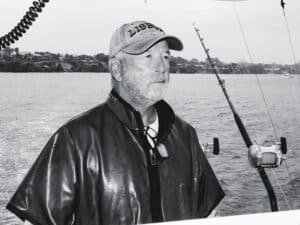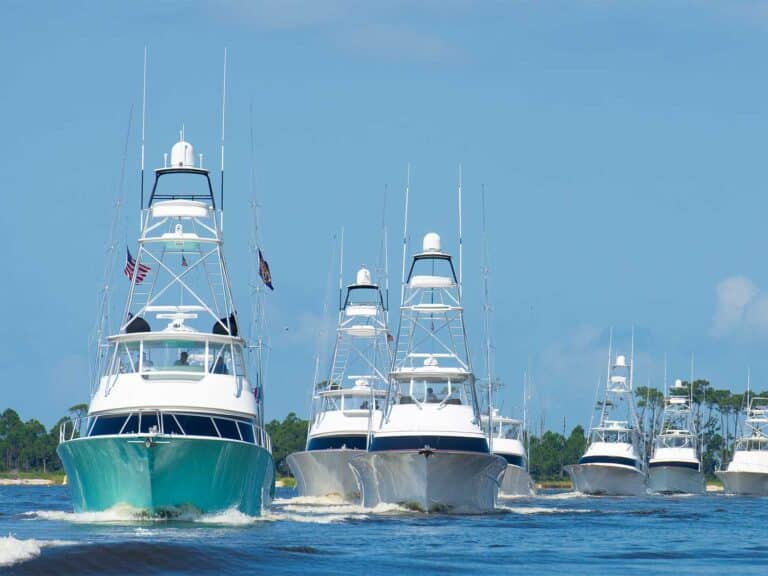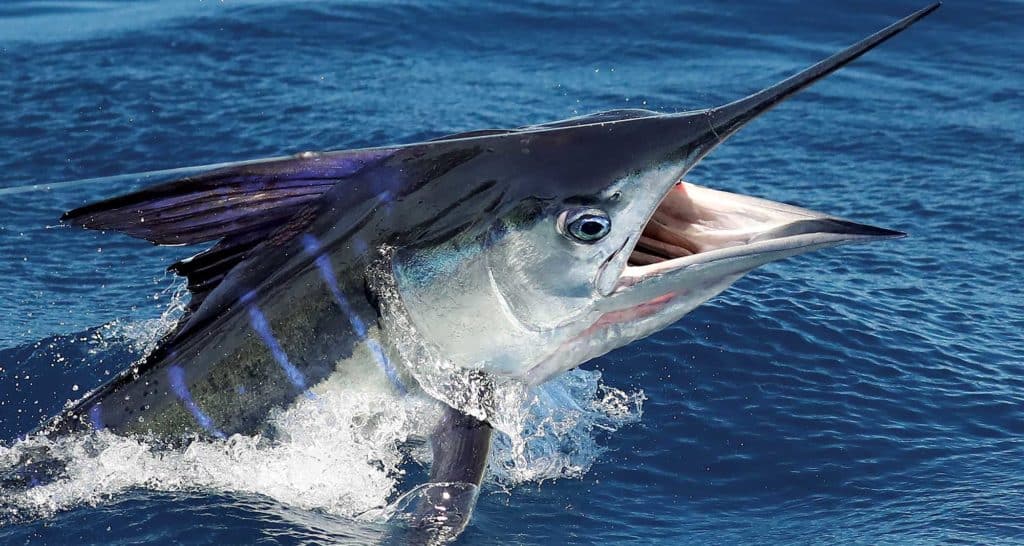
It was late in the evening the day before Labor Day when I received a call from my fishing partner that a mutual friend had found the striped marlin. He had worked an area we had recommended the day before and located a good batch of fish between Catalina and Santa Barbara Island, in a body of water we had been watching for the past two weeks via satellite imagery.
The next morning found us slowly drifting past the bell buoy outside Corona del Mar Beach as a hungry school of Pacific greenback mackerel busied the crew catching bait for our next three days of fishing. As we gently shook our last mackerel into the bait tank, I slowly idled the old Pacifica out into the darkness on a familiar path to my favorite areas out to the west of the still-sleeping California coastline.
After putting 50-plus miles astern, a quick check of the temperature gauge revealed the distinct 2-degree break we had been watching move steadily west-northwest over the past six days, confirming we were in the zone. As we stitched our way down the edge, our quarry presented itself as a group of three sleepers spotted a half mile off the edge by our team on the bridge using gyro-stabilized binoculars. The three striped marlin, traveling slowly in a chevron formation with dorsals folded down and tails exposed, were about to be delivered breakfast in bed as I quietly slid the Pacifica into casting range. As three volleys of mackerel flew through the air and descended onto their targets, the slickcalm seas erupted. Tails kicked into action, dorsals popped up and the three marlin chased our casters’ baits in all directions. Hoots and yells of joy broke the quiet morning air as two of the three striped marlin began greyhounding in opposite directions. It was just the start of a great fishing trip —the next two and a half days ended up being the most successful trip we had ever experienced, releasing half a season’s worth of fish, and perhaps even best of all, we had the action all to ourselves.
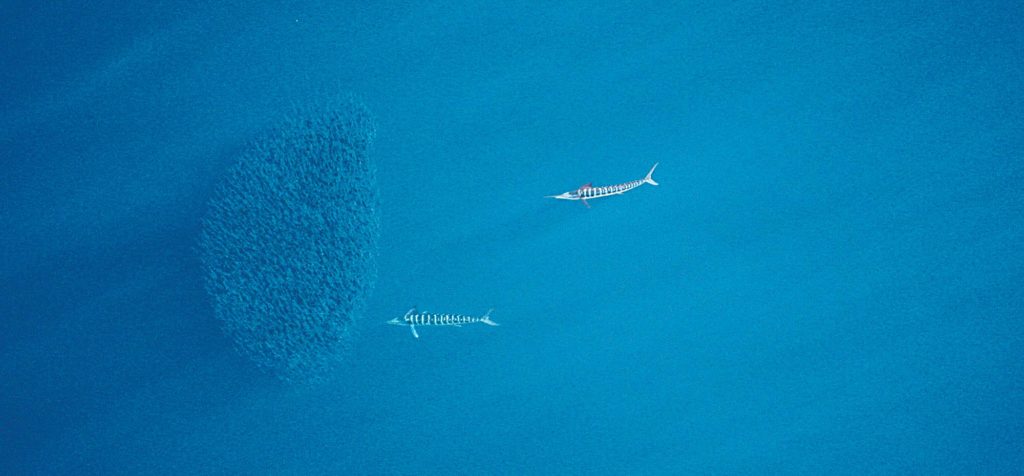
Would You Believe?
We’ve all heard or read about this kind of action in Cabo San Lucas, Mexico, but Southern California flies under the radar as a prominent billfish destination. Over the years, I have always been amazed that the area’s billfish potential isn’t more widely known. Given the right conditions, we have a solid fishery here, but when I tell people we fish for marlin, they look at me like I am crazy.
Actually, marlin fishing is nothing new to Southern California. It could be said that modern sport fishing originated here with the world’s first big-game fishing club: the Tuna Club of Avalon. Originally, anglers pursued the vast schools of 100-plus-pound bluefin tuna, but when migrations tailed off in 1920, members turned their interests to striped marlin and swordfish. The pursuit of billfish off the Southern California coast has evolved from wooden boats and linen line to high-speed megayachts and braided Spectra, but as the equipment has changed, the tactics have stayed relatively the same.

Knowing the Fish
Striped marlin are the primary billfish we target in California waters, followed closely by the great gladiator of the sea, the broadbill swordfish. In the recent El Niño event from 2014 to 2015, blue and black marlin up to 700 pounds also made their appearance, as well as decent numbers of shortbill spearfish. The fishing season typically runs from as early as late June through Thanksgiving, with some seasons running even longer still during stronger El Niño periods.
The striped marlin are believed to migrate into our waters from the southwest, making a long trek from the western Pacific near Japan. Recent genetic studies have revealed the possibility of five distinct separate stocks of fish: Japan-California; an immature Hawaiian stock; a mature Hawaiian group; a Mexico-Central America-Ecuador stock; and, the largest in terms of marlin size, the Australia-New Zealand stock. Scientists theorize that during El Niño cycles, the Japan-California stock pushes to the north and is then backfilled by the higher-volume Mexico-Central America stock, thus creating a Cabo-like striped marlin fishery right in our backyard.
Swordfish are a different story. Chugey Sepulveda, director and senior scientist at the Pfleger Institute of Environmental Research, is a fisherman and research scientist and has a wealth of knowledge on the Southern California fishery. “In the eastern North Pacific, there are two stocks of swordfish: the eastern Pacific and the western and central North Pacific stock,” he says. “Based on current management through the International Scientific Committee, California swordfish are believed to be from the WCNP stock. At PIER, our recent swordfish-tagging studies, supported through federal and private grants, have shown that Southern California is likely a mixing area in which fish from both stocks enter to feed. Basically, tagged swordfish off California go to the west toward Hawaii and also south into Mexico.”
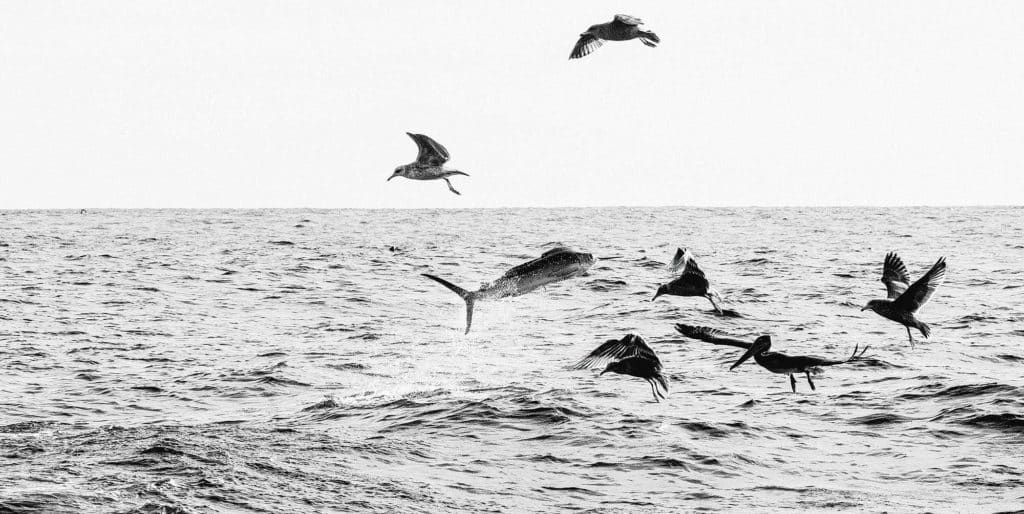
El Niño: Boom or Bust?
The weather pattern known as El Niño, in which warm, nutrient-rich water floods the region on an irregular basis every few years, greatly affects the fishing.
So, does an El Niño event create the best billfish conditions locally? Bob Hoose, a stalwart of the SoCal billfish community, has been successful for decades on his boat, Prospector. When asked about the recent El Niño in 2015, Hoose says, “In the past 30 years, the 2015-2016 season was the best local marlin fishing in my lifetime. I have never seen that volume of fish on a normal or La Niña season.”
As for the catch reports, during the 2015 season, Capt. Doug Carson and Andy Crean’s crew aboard Bounder racked up 96 striped marlin releases, with most of those fish coming from the Channel Islands in the month of September. The big El Niños of the early 1980s were no slouch either. “During the 1983-1984 season, Capt. Joe Mike Lopez and Dave Denholm on Espadon had 41 releases in ’83 and 47 releases in ’84, which is great marlin fishing by our standards,” Hoose says. However, this does not mean fishing dies during El Niño Southern Oscillation-neutral or La Niña years. Hoose has had plenty of action: “One of my best days on the water was during a La Niña season aboard Dreadnaught 44 with Capt. Jack Patterson. We found packs of marlin on the 43-fathom spot in green 64-degree water. So, we have had truly excellent marlin fishing during La Niña years, and it was always associated with an area holding bait, mostly sauries, anchovies and mackerel,” he reports.
When it comes to swordfish abundance during an El Niño, much is a mystery.
In talking to some more experienced captains and anglers, they cannot remember a more productive year than 1978, when water conditions set up perfectly during a normal, or ENSO-neutral, season. The Balboa Angling Club in Newport Beach, California, reported 71 rod-and-reel broadbill captures, which is wildly more than the closest next year of 29 caught in 1971. In 2017, we experienced a normal cycle, and recreational anglers reported an abundance of basking swordfish in the SoCal Bight and a resurgence in captures.
A recent addition to the marlin and swordfish addicts in the region is Seth Dubois, of the hard-charging crew on the 50-foot Pacifica Bullpen. He says, “In 2017, I saw more swordfish than I had any other year. I think the reason was the water temperature and the amount of squid and bait on our local banks.” I asked Sepulveda for his take on last season’s increase in swordfish sightings. He says, “1978 was certainly an anomaly, and I can assure you that 2017 did not come close to it. Further, we had some great weather this year, which likely helped us see those swordfish that decided to put their fins out of the water.”
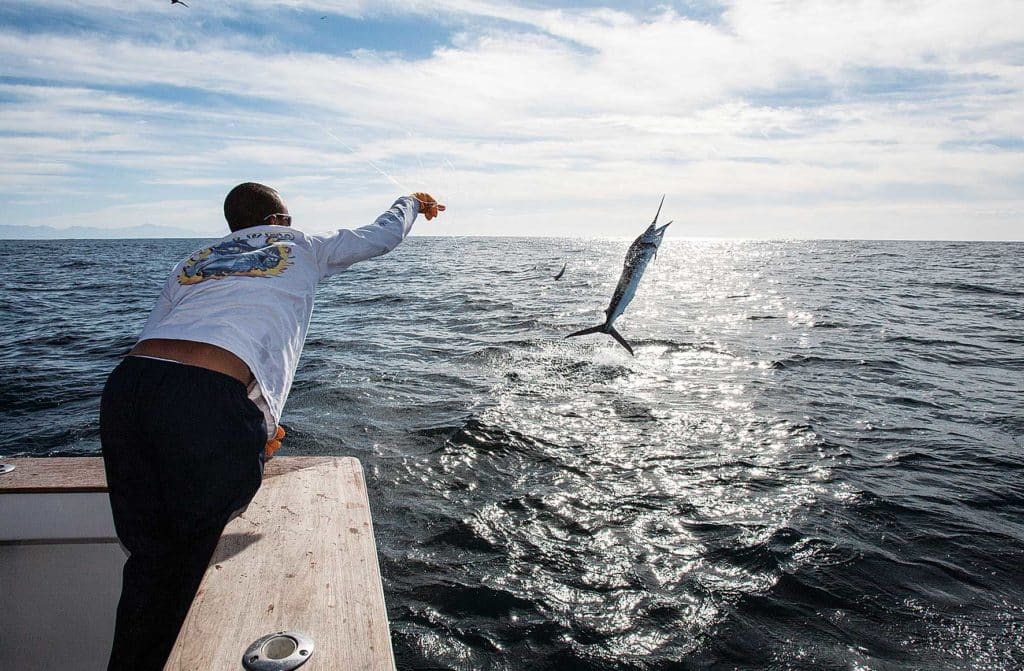
Attention to Detail
The best on the West Coast always spend a few hours before each trip preparing a game plan for their offshore adventures. Dubois is all about trip planning: “I use Terrafin to check surface temperature and water clarity, and try to track where the water is moving.” Utilizing online charts is a key to Hoose’s success on Prospector as well. “I look for transition zones, where the blue water meets green and where they mix, since this sets up the food chain to attract billfish and other game fish.”
Having a reliable network of fellow marlin anglers will exponentially up the odds to success. The single most valuable fish-finding tool is reliable firsthand information. Dubois has been cultivating a list of contacts over the years. “If other boats have been out catching fish before our trip, they will let us know,” he says. “I have a small, tight group of marlin hunters. A good team comes from years of networking, making friends and earning the respect of others.”
In terms of finding fish, nothing trumps time on the water. Successful West Coast anglers start at gray light before dawn and don’t stop fishing until sunset; if there is enough daylight to see, we are fishing.
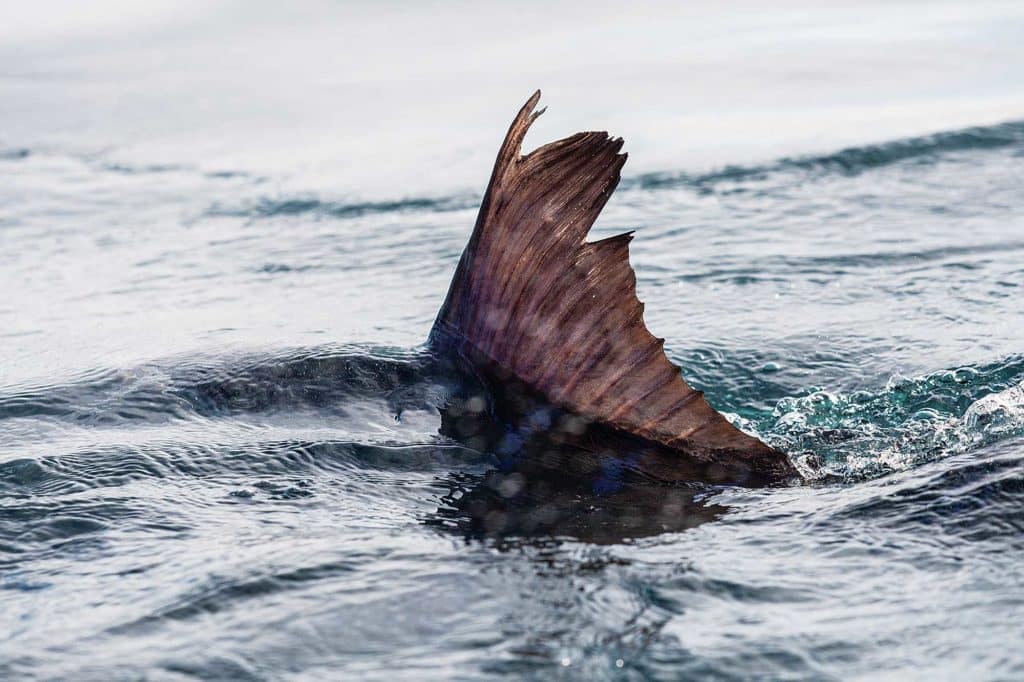
West Coast Style
Fishing for billfish in Southern California is more like a big-game hunt than a standard marlin-fishing trip. The focus is on what’s in front of the boat versus behind it. We encounter four types of surface-frolicking striped marlin: jumpers, sleepers, tailers and feeders. Jumpers are fish thought to be trying to shake off parasites from their bodies and can be seen free-jumping numerous times in succession. Sleepers appear to be lazing on the surface, nearly black in color, with dorsals retracted against their backs, creating a rounded hump, and with tail fins exposed. As the name suggests, they can be very difficult to entice. At other times, particularly if there is a breeze, we look for tailers, which usually rise to the surface to catch a down-swell ride. It’s not unusual for a single tailer to stay up for several miles, offering multiple casting opportunities. Feeders are normally a small group of marlin that have corralled a school of baitfish near the surface and are the most likely of the four to eat a live mackerel that’s cast in their vicinity.
Every trip also holds the promise of a chance meeting with a basking swordfish. This leaves broadbill hunters searching for water conditions that are more likely to make swords want to bask in the sun after spending time in the cold, dark depths. So, what conditions are preferred? “Unfortunately, daily basking activity has been shown to be very intermittent, with data from Southern California showing that it can account for as little as 8 percent of their day,” Sepulveda says. The prevailing opinion was that swordfish came to the surface to digest their evening meals, but the recent scientific findings are showing these basking events are quite rare.
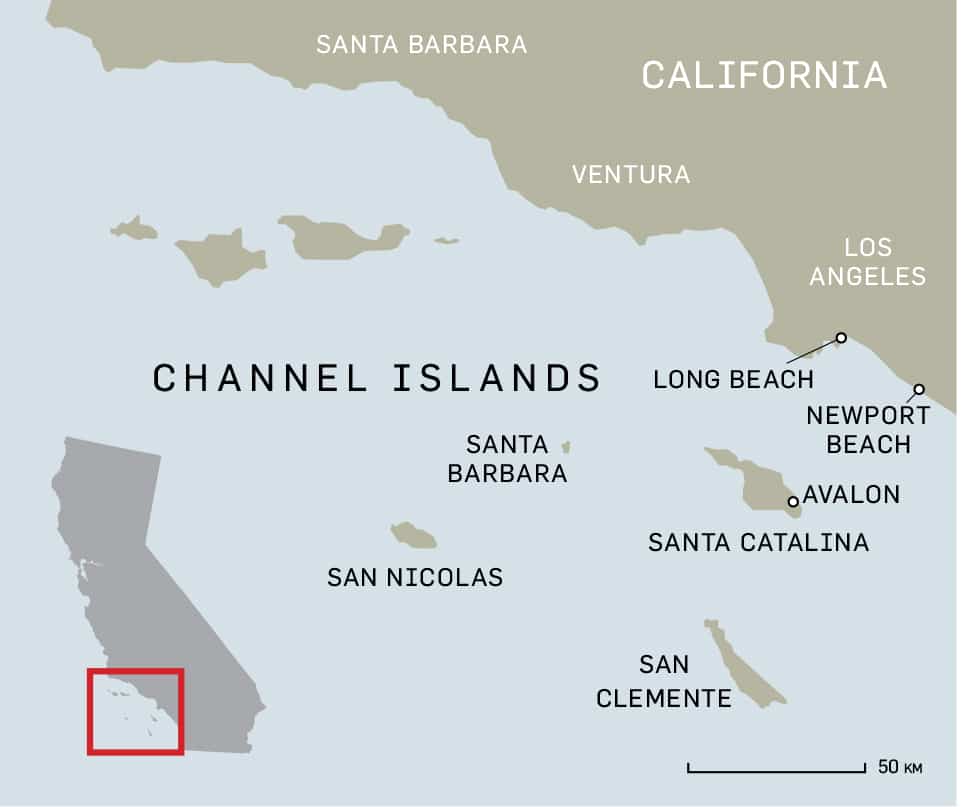
Eyes on the Prize
For the Bullpen crew, Dubois says, “The most important factor to successful results is the proper use of optics. We normally have three guys up on the bridge scanning at different angles. We use Fraser Volpe Stedi-Eye Mariner stabilized binoculars.” Dubois noted his catch breakdown according to technique. “In terms of catch percentages, our totals looks like this: 80 percent we catch by casting a live bait to fish on the surface; 15 percent are marlin that we raise trolling and eat a live bait we drop back; and 5 percent we catch on lures.”
Although our West Coast focus is toward the front of the boat, we do prefer the bait-and-switch method when trolling. The standard has become a four-line spread with two squid chain teasers and two single hookless lures. On Prospector, Hoose says, “We deploy a combination of squid teaser chains and dredges. These are raising far more billfish than boats that are not pulling teasers. Our go-to trolling spread is constantly changing and is selected based on conditions. Once we locate fish and determine the boundaries of the zone, we swap out one of the squid chains for a strip-teaser dredge and run naked ballyhoo behind each teaser. Probably the biggest change in our local trolling arsenal has been the relatively recent acceptance of slowing down and using rigged ballyhoo in combination with dredges and teasers.”
With sight-fishing, teamwork is the name of the game. A seasoned crew of five is ideal to properly manage a West Coast-style cruiser. An ideal distribution of duties would be two spotters, optimally in a tower, using gyro-stabilized binoculars and wireless communication capability with the helmsman. Two more crewmembers in the cockpit manage the spread while trolling and are ready to run to the bow for casting opportunities. The captain quarterbacks the operations from the bridge, giving direction when billfish are encountered.
Virtually any crew can become a very efficient team. It takes practice working together, knowing your roles and executing fully on the opportunities that may present themselves during each day on the water.
Preparation, Passion, and Perserverance
Striped marlin fishing in Southern California is not for the uncommitted. The average day trip might produce a few sightings and possibly a bite or two, but those memorable days are waiting for those who put in the time and effort. Dedication is the number-one key to success. If you do your homework before fishing, learn how to read the conditions and never put down the binoculars, releasing a good number of striped marlin in a richly historic fishery can be a reality.
About the Author: West Coast angler, lure-maker and captain, Chet Spreen is searching for the world’s next billfish hot spot, as well as new techniques to optimize opportunities.



